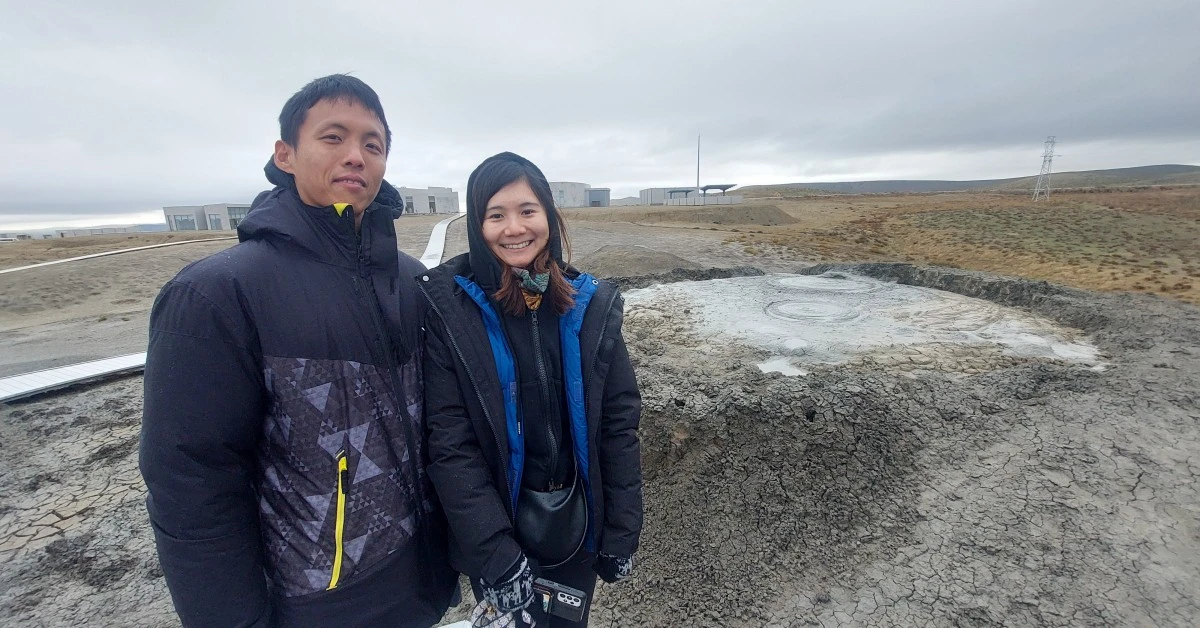Ultimate Gobustan & Mud Volcano Baku Review
EscapeWithAnnualLeave contains affiliate links. We may receive compensation at no extra cost to you. See our Disclosure Policy for more information.
Located Southwest of Baku, Gobustan Rock Art and the Mud Volcano Tourism Complex are very popular destinations. Gobustan is famous for its Rock Art as a UNESCO World Heritage site with over 40,000 years of history. The nearby mud volcanoes present a unique geological spectacle where mud instead of lava erupts.
It takes around 1 hour drive from Baku and thus it is a usual item on the city’s itinerary. You will usually need around 1 hour for the Gobustan Rock Art Cultural Landscape and another one for the Mud-Volcano Tourism Complex.
The best way to navigate these two and save time is by Gobustan and mud volcano half-day tour. Factoring in the transportation time, you can finish the attractions within 4 hours in the morning, leaving more time for other Baku items be it city center attractions or the fire temple & burning mountain.
While you can also take buses or even Bolt (famous for scams in Baku), it probably takes more time than the extra cost for the half-day tour.
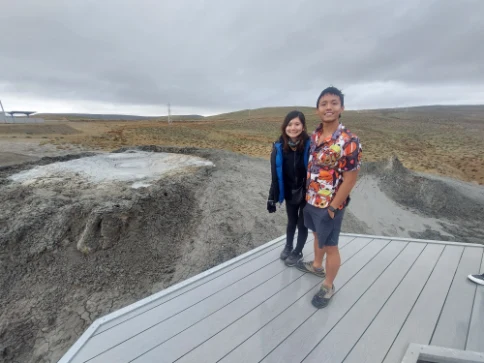

What I did
During my last visit, I joined a full-day tour that covered Gobustan and mud volcano in the morning; and Ateshgah (Fire Temple) and Yanardag (Fire Mountain) during late afternoon. By doing so, I managed to cover most of the Baku within 2 days, with the first day for all the essential attractions in the city center.
What surprised me is, the Gobustan is actually a bit OVERRATED. In that, I decided to write this Gobustan rock art cultural landscape and mud volcano reviews for your trip planning.
What To Expect?
The usual sequence would be going to the Mud Volcanoes Tourism Complex first and then the Gobustan National Historical Artistic Preserve (the Rock Arts ) second.
Mud Volcanoes Tourism Complex

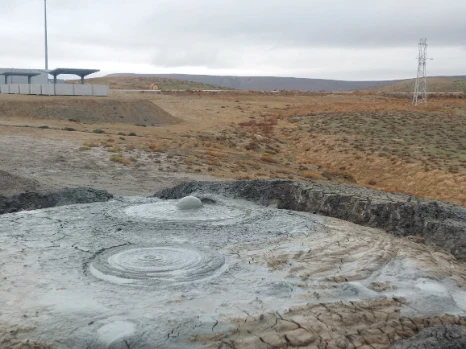
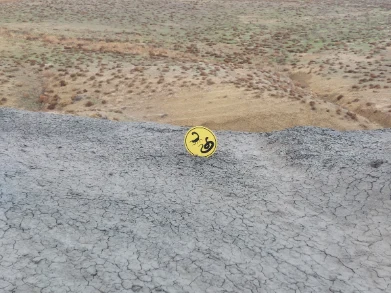
There are multiple mud volcanoes in Azerbaijan due to its richness in natural oil gas. Despite being a volcano, they erupt mud bubbles instead of lava. You can easily spot them in the Gobustan mud volcano areas where each volcano will form a summit shape. It is one of the most unique natural phenomena that you can find on Earth (probably only in Azerbaijan per my understanding).
Despite so, you should expect “small volcanoes” instead of grant volcanoes like the one in Indonesia. In fact, they look relatively gray and normal in a photo. The photos of the burning mountain are more amazing per my experience. Additionally, you can put mud on your face while the medical benefit is uncertain.
Furthermore, there is no mud spa-like Nha Trang (Vietnam) there. So the main activity is just to see the small Azerbaijan Gobustan mud volcanoes and take photos.
Other than the mud volcanoes, the complex also offers a museum with information to display the science behind the mud volcanoes. It is a unique tourist attraction indeed but not really to the level of “Wow”.
Gobustan National Historical Artistic Preserve
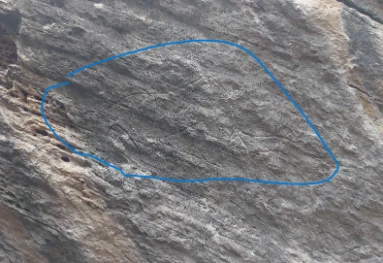
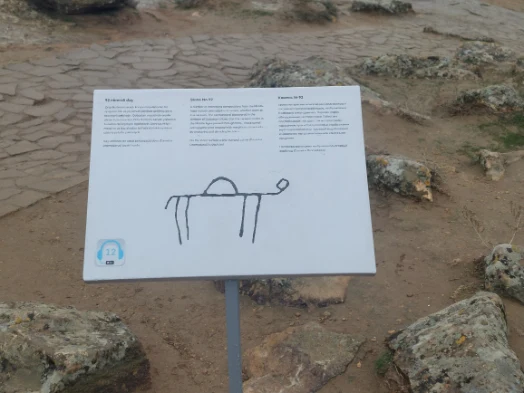
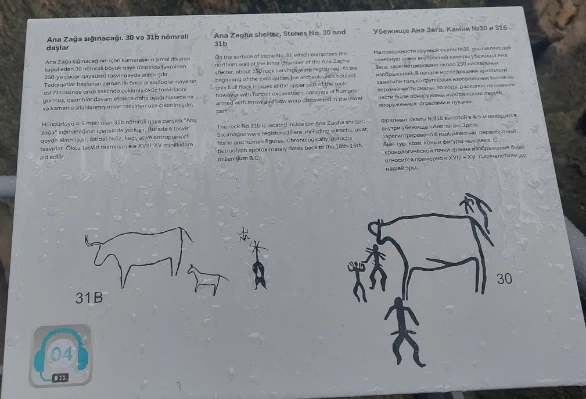
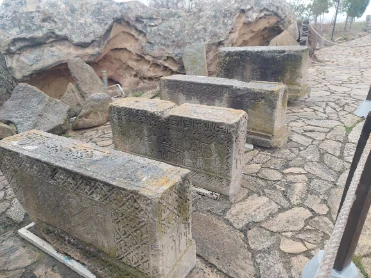
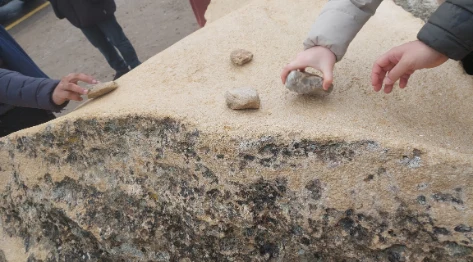



As for the Gobustan Rock Art Cultural Landscape review, it is a UNESCO World Heritage Site (Gobustan Rock Art Cultural Landscape – UNESCO World Heritage Centre) with rock engraving over 40,000 years. The whole preserve site takes around an hour to visit. There you will find ancient rocks with an information board in front of it. Even without an audio guide, the boards have clear information about the engraving on the rock, the history, and the lives of ancient human societies.
Unfortunately, unlike the engraving in Egypt, Ethiopia, or most of the other Countries. The Gobustan ones are relatively unclear. Without the information board, you can hardly imagine the drawings on the rock. To me, it looks more like random graffiti than impressive ancient heritage. I had to rely on the tour guide’s explanation or the information board to understand the meaning of each rock preserved.
Still, there isn’t much historical story behind the engraving. Yes, the rocks depicted the scenes of old daily lives including hunting and other rituals. There is no historical story behind it.
Rock arts aside, I am more fond of the wildfires there, especially since the area has a bunch of cute foxes that are very acquainted with humans. I would say taking photos with them was the most rewarding part during my last visit there. They usually frequent the free toilet entrance at the rock art site.
Landscape-wise there aren’t many IGable photo spots there as compared to mud volcanoes, fire temples, or the burning mountain of Baku.
Entrance Fee
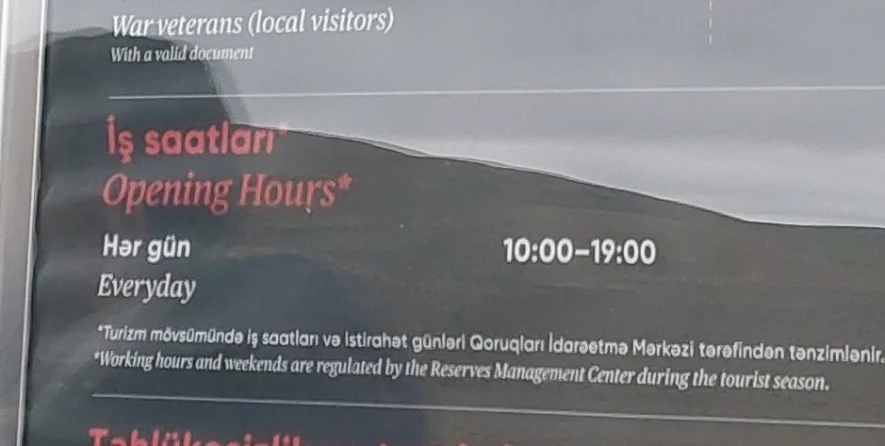
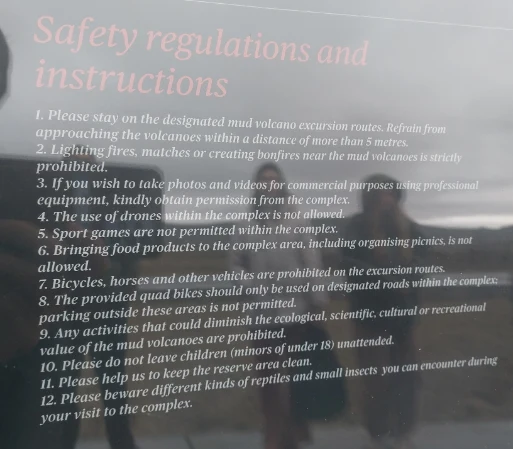
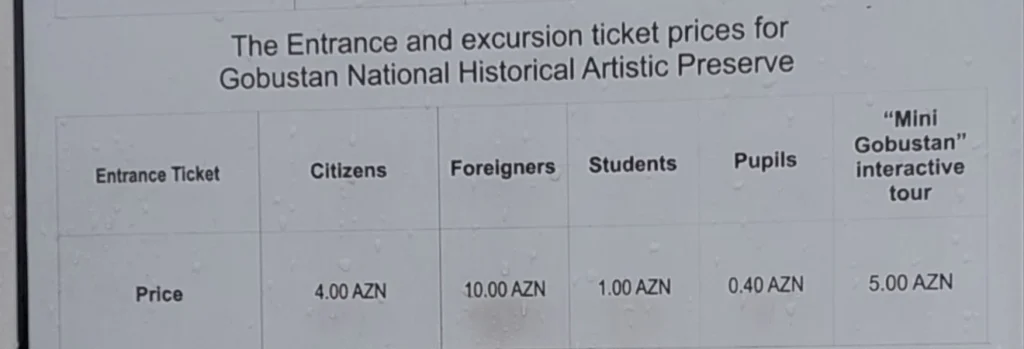
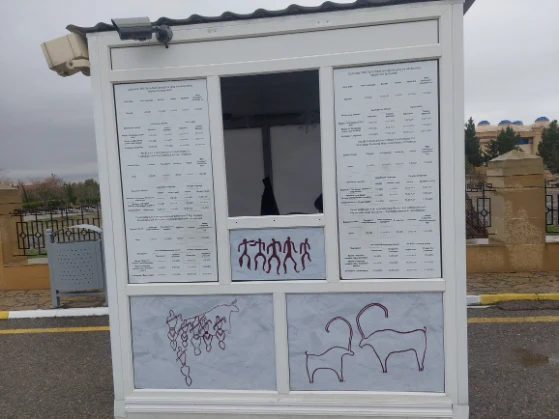
Entrance fees for both attractions are very affordable. For the mud volcano complex, it will cost you 15 AZN (~ 9 USD), and for the Gobustan National Park Azerbaijan, it will cost another 10 AZN (~6 USD). You need to be aware that sometimes if weather allows the half-day/day tour may give you the option to take a local taxi to the farther side mud volcano which would cost 20 AZN (~12 AZN) in cash. So make sure you have exchanged sufficient AZN beforehand.
Opening Time
Both mud-volcano complex and Gobustan Rock Art, are open daily from 10 am but the Rock Art closes one hour earlier at 6 pm. Usually, you will be going to the mud volcano at 10 and the Rock Art site around 11 am.
Dress Code
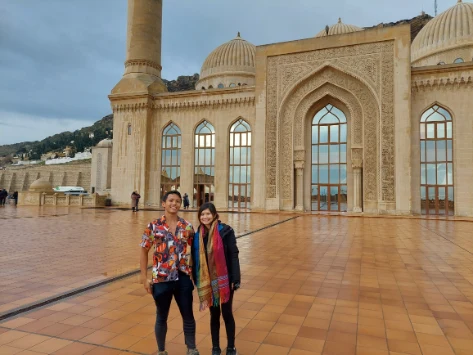

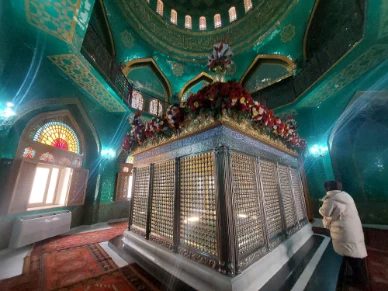
There is no dress core requirement for both of the attractions. However, most of the day tours would also take you to Bibi-Heybat Mosque, built in the 13th Century with a stunning view of the Caspian Sea because it is on the driveway. If you want to go inside the Mosque, then you should follow the Muslim dress code with no shorts, a skirt, and covered hair with a scarf (for females).
Mud Volcano + Gobustan Versus Ateshgah +Yanardag
While the mud volcano and Gobustan Rock Arts are on the SouthWest side of Baku, the Ateshgah (fire temple) and Yanardag (burning mountain) are on the Northwest side. Both take around an hour’s drive from Baku, but they are on completely opposite sides, meaning from Gobustan to Yanardag is around 2 hours.
Co-incidentally, both offer an experience of UNESCO Heritage Site (Gobustan National Park versus Ateshgah Fire Temple) and natural wonder (mud volcano versus burning mountain). As I mentioned, in my other article for the two fire attractions. I recommend prioritizing Ateshgah & Yanardag over mud-volcano & Gobustan Rock Arts.
The main reason is I found the best photo of the burning mountain. On the other hand, the engraving at Gobustan somehow lacks historical context and is not quite impressive.
Wonder how to stuff all the attractions together? Feel free to take a look at our 2 day Baku itinerary.
How Do You Rank Them
I love taking photos that remind me of the Country I visited. So for me, I would rank Yanardag (burning mountain) as the best spot for Baku with its 3m-hieght flames. Then mud-volcano comes next because it is hard to find another spot in the world that provides the same.
After that, the fire temple is good for both photos at the central eternal flame and learning the history of fire worship. The last comes to Gobustan where the engraving is a bit disappointing.
Of course, if you have a day, you should follow my practice to navigate all these four attractions with a day tour.

